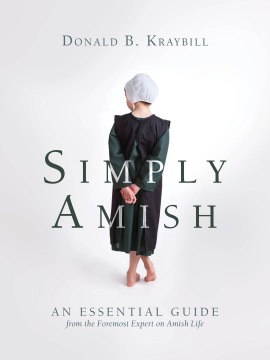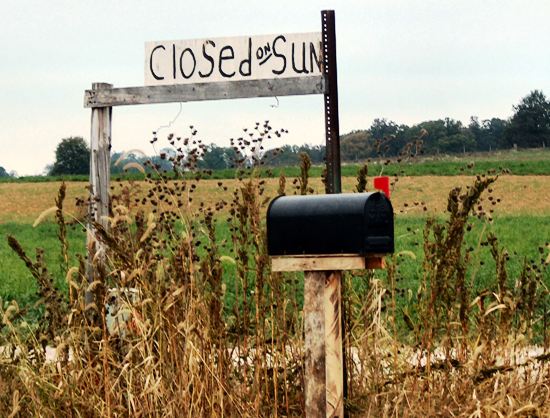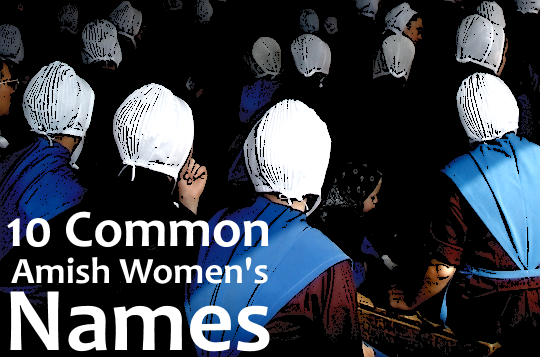Simply Amish Book Winner (Plus: Excerpt on Amish Marriage & Family)
Simply Amish is Donald Kraybill’s latest book, described as “an essential guide to Amish life, culture, and faith.” We’ve got a winner today of last week’s giveaway contest. But first, an excerpt from Simply Amish, on Amish marriage and family.
 Marriage and Family
Marriage and Family
Donald B. Kraybill
Excerpted from newly released Simply Amish: An Essential Guide from the Foremost Expert on Amish Life by Donald B. Kraybill. (Herald Press, 2018). All rights reserved. Used with permission. www.HeraldPress.com
Church and family are the primary social units of Amish society. Young people move into adulthood early and usually marry by their early twenties. Marriages are not prearranged, but both bride and groom must be baptized members of the Amish church before marriage. They usually come from subgroups with similar practices but typically are not from the same church district. In rare cases a bride or groom may have grown up English and joined the Amish. Since divorce is forbidden, marriage is permanent.
Daylong weddings are festive moments of celebration in Amish society. The ceremony follows a lengthy church service, held on a weekday at the home of the bride or a close relative. Several hundred guests join the festivities, which often include a lunch and an evening meal.
Amish couples, on the average, have about seven children, and in the most traditional groups, ten or more. Most families do not use artificial birth control unless advised by a physician for health reasons; however, some do use natural methods of family planning. Some babies are born in hospitals, but most greet the world in a birthing clinic or at home, under the supervision of a physician or a midwife.
Amish families reflect traditional gender roles, in which the man serves as the spiritual head of the home. He is seen as responsible for its spiritual welfare and matters related to the church and the outside world. Women often hold considerable sway in family and parenting matters. Quipped one husband, “I’m more afraid of my wife than my bishop.” Another man described marital roles in this way: “The wife is not a servant; she is the queen, and the husband is the king.”

As in most families, gender roles in Amish marriages vary by personality. When husbands work at home, spouses often share some roles. Women assist in the barn, shop, or field; men help in the garden, greenhouse, or around the house. Wives rarely hold full-time jobs outside the family when their children are young, although some operate small businesses from their home.
Networks of extended families provide a strong sense of identity in Amish society. The extended family system is muscular and significant. The typical Amish person has more than two dozen aunts and uncles and more than seventy-five first cousins, many of whom live nearby. The family provides a dense web of social support from cradle to grave. For instance, two or three relatives often assist a family during the arrival of a new baby. Adult sisters may gather once a month for a “sisters’ day,” a work frolic that blends chores and fun while women harvest vegetables, clean house, or make quilts. Family members help each other during a crisis or difficulty such as a fire, flood, or death.
Because families are so large and names are similar, many people have a nickname related to a special trait, or one that shows their family connection. “Horseradish Jake” may refer to someone who raises horseradish, or who eats a lot of it. A person named Sara may be known as “Ben’s Hannah’s Sara,” referring to her grandfather and mother. The large Amish community near Lancaster, Pennsylvania, has more than one hundred women named Mary Stoltzfus and at least ninety Katie Stoltzfuses.
Extended family undergirds the elderly. The Amish do not operate retirement homes. The elderly normally live in a Grossdawdy Haus, a small adjacent “grandfather” house, or apartment, at the home of one of their children. Some grandparents have more than eighty grandchildren and two hundred great-grandchildren. Esteemed for their wisdom, the elderly find meaning and dignity as they assist their adult children. And surrounded by droves of grandchildren, they pass on the wisdom of Amish ways to the rising generation. Amish people typically die at home. More progressive communities accept hospice service from outside caregivers.
Donald B. Kraybill is internationally recognized for his scholarship on Anabaptist groups. His books, research, and commentary have been featured in national and worldwide media, including the New York Times, Washington Post, The Guardian, NPR, CNN, and NBC. He is distinguished college professor and senior fellow emeritus at the Young Center for Anabaptist and Pietist Studies at Elizabethtown College. Kraybill is the author, coauthor, or editor of many books, including Amish Grace, The Amish Way, Renegade Amish, and The Riddle of Amish Culture.
Simply Amish Winner
I chose a winner using random.org. Congrats to Carol (comment #139), you’re the winner. Send me your shipping info (ewesner[at]gmail[dot]com), and I’ll pass that along to the publisher.
If you didn’t win, you can pick up Simply Amish at Amazon among other places.







Congratulations Caro
l on winning Simply Amish.
your information
It’s the first time I’ve seen such an accurate account of Amish lifestyles. I have a summer home in Berlin, Ohio, and I spend my time amongst the Amish. We are family, in our minds. When I read some of the “facts” about the Amish in books I wish someone would actually tell the real story…………….and in your comments above, you certainly did. Thank You! Donna
Photos
I have recently been taking photos in LaGrange County, Indiana and, despite being a total amateur, some have turned out pretty good and might be worth sharing. If I want to send you photos for your review to post, how do I go about doing so?
Jim Halverson
Hi Jim, sure. Just email me at ewesner(at)gmail(dot)com. I’d enjoy seeing them and hearing about your visit.